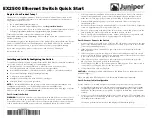
VoIP/(802.11g) Broadband Firewall Router
Chapter 4: Configuration
Example:
If you like to remote accessing your Router through the Web/HTTP at all time, you would need to enable
port number 80 (Web/HTTP) and map to Router’s IP Address. Then all incoming HTTP requests from
you (Remote side) will be forwarded to the Router with IP address of 192.168.1.254. Since port number
80 has already been predefined, next to the
Application
click
Helper.
A list of predefined rules window
will pop and select
HTTP_Sever
.
Application:
HTTP_Sever
Time Schedule:
Always On
Protocol:
tcp
External Port:
80-80
Redirect Port:
80-80
IP Address:
192.168.1.254
Edit:
Click it to edit this virtual server application.
Delete:
Click it to delete this virtual server application.
Using port forwarding does have security implications, as outside users will be
able to connect to PCs on your network. For this reason you are advised to use
specific Virtual Server entries just for the ports your application requires,
instead of using DMZ. As doing so will result in all connections from the WAN
attempt to access to your public IP of the DMZ PC specified.
Attention
If you have disabled the NAT option in the WAN-ISP section, the Virtual Server
function will hence be invalid.
If the DHCP server option is enabled, you have to be very careful in assigning
the IP addresses of the virtual servers in order to avoid conflicts. The easiest
way of configuring Virtual Servers is to manually assign static IP address to
each virtual server PC, with an address that does not fall into the range of IP
addresses that are to be issued by the DHCP server. You can configure the
virtual server IP address manually, but it must still be in the same subnet as the
router.
87
















































